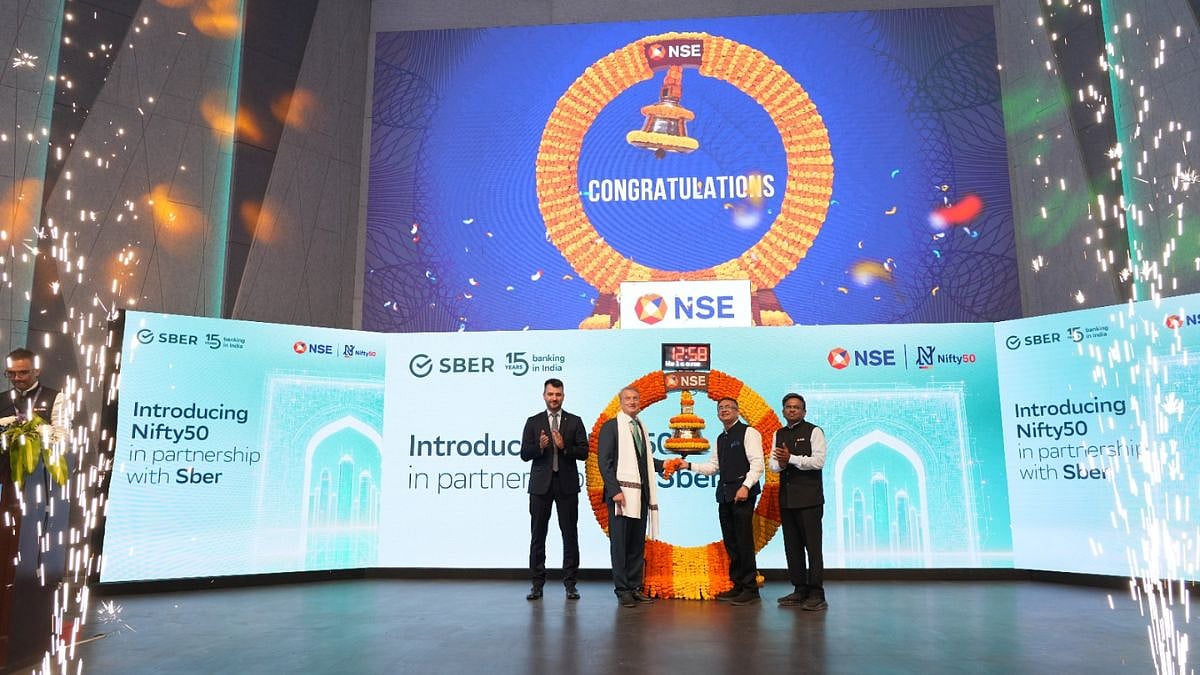Uncertainty is an inherent part of investing in the financial market. Market volatility, economic fluctuations and geopolitical tensions all influence market sentiment, driving up or driving down stock prices.
Moreover, investment options that are less volatile, such as debt mutual funds, do not offer significant long-term growth potential.
That’s where large cap funds come in. Through lumpsum and SIP investments in the country’s leading companies, large cap funds are typically less impacted by volatility than equity funds invest in small or mid cap stocks.
To further enhance the risk return balance, the Bajaj Finserv Large Cap Fund, the latest entrant in this space, adopts a quality over quantity approach, focusing on the Champions of Corporate India. The New Fund Offer period began on July 29th and is on till August 12, 2024.
This article tells you more about the key features of Bajaj Finserv Large Cap Fund and why it can be a suitable option in a volatile market.
What are large cap funds?
Large cap funds the country’s largest companies by market capitalisation. These are countries ranked between 1 and 100 on the stock exchange.
Large cap firms are typically industry leaders with established track records, substantial revenue and a strong presence in their respective markets. As a result, they tend to be less impacted by downturns and volatilities than and smaller companies.
What makes Bajaj Finserv Large Cap Fund suitable amid volatility?
The Bajaj Finserv Large Cap Fund follows a concentrated strategy, with a portfolio of just 25-30* stocks. These are high conviction stocks – those whose long-term growth potential the fund manager strongly believes in. Here are some of the features of these large cap stocks:
1. Champions of Corporate India: The fund will focus on companies that have been at the forefront of India’s growth story and are expected to continue contributing to the country’s economic rise on the global stage.
2. Strong financials: These are market leaders that typically have strong balance sheets, healthy cash flows and a diversified revenue base. Their financial strength can provide some degree of cushioning during economic downturns, making large cap stocks relatively stable compared to stocks of smaller companies.
3. Resilience: High-quality companies tend to be more resilient during economic downturns. Their strong fundamentals, competitive advantages, and robust business models help them usually withstand adverse conditions better than lower-quality companies. Their ability to innovate, adapt, and maintain market leadership position also helps them tide over market fluctuations.
4. Sustainable growth: Quality companies have typically offered relatively stable and positive growth over the long term, despite brief drops. Moreover, they have historically performed better than small and mid caps during market downturns and have recovered their losses faster. (Past performance may or may not be sustained in the future).
5. Risk mitigation: These companies are less likely to experience severe financial distress, makes large cap funds the least risky among all equity mutual fund options.
*The above investment strategy is based on prevailing market conditions and opportunities available at the time of investment. The Fund Manager reserves the right to change the count of stocks invested based on the SID and the opportunities available at the time of investment done, Position in derivatives will not be considered for the computation of total number of stocks in the portfolio.
Benefits of a concentrated strategy
The quality over quantity approach of the fund, with its focus on a few select stocks, offers the following opportunities:
. High return potential: By focusing on fewer stocks, the fund can allocate more capital to high-conviction assets, optimising growth potential.
. Greater control: A concentrated portfolio allows for better control over the portfolio and more leeway to implement strategic decisions.
. Diversification: The stocks are spread across sectors to mitigate sector-specific risks while allowing for adequate exposure to top-performing companies.
. High-conviction stocks: These are stocks chosen based on thorough research and a positivity about their growth prospects. This is based on a comprehensive understanding of the company’s business model, competitive advantages, and market opportunities.
High active share
The high active share of the Bajaj Finserv Large Cap Fund is another feature that sets it apart. Active share measures the percentage of a fund’s holdings that differ from the benchmark index. A high active share indicates that the fund’s portfolio is significantly different from the index, reflecting the fund managers’ active investment decisions.
Benefits of high active share
. Potential for Outperformance: A high active share suggests that the fund is not merely replicating the benchmark index. Instead, it is actively seeking opportunities to outperform the market over long term by selecting stocks that have the potential for higher returns.
. Active management: Funds with high active share have a high degree of active management, with fund managers making strategic decisions based on market conditions and opportunities. This can help navigate uncertainties and capitalise on market movements.
. Strategic approach: A high active share gives room to the fund manager to follow a tailored investment strategy that aligns with the fund’s objectives.
How to invest in Bajaj Finserv Large Cap Fund
You can invest in Bajaj Finserv Large Cap Fund both offline and online, through Bajaj Finserv Asset Management Ltd, distributors and aggregators. To invest online, simply visit www.bajajamc.com and click on the log in/register button on the home page. You can also click on ‘Invest Now’ on the Bajaj Finserv Large Cap Fund page. You will then be directed to the investor portal, where you will be guided you through the quick, simple and 100% digital investment process.
You can invest via lumpsum or Systematic Investment Plan (SIP). Lumpsum and SIP investments start at Rs 500. Units can be purchased at the face value of Rs. 10 during the NFO (July 29th to August 12, 2024). Once the fund reopens for subscription, investors can purchase units at the applicable Net Asset Value (NAV) after placing the purchase request.
Mutual Fund investments are subject to market risks, read all scheme related documents carefully.









